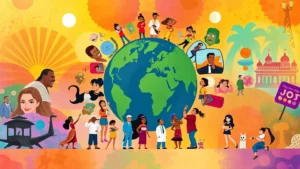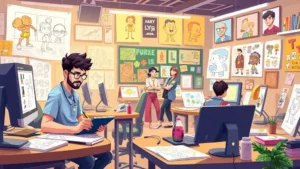Animation has undergone a remarkable evolution since its inception, transitioning from simple hand-drawn sketches to sophisticated digital creations. The early days of animation were characterized by short films that captivated audiences with their charm and creativity. As technology advanced, so did the techniques used in animation, allowing for more complex storytelling and character development. Today, animated films and series are not only a staple of children’s entertainment but also resonate with adult audiences, showcasing the versatility of the medium.
In the 1990s, a significant shift occurred with the introduction of computer-generated imagery (CGI), which revolutionized the animation industry. Iconic films like ‘Toy Story’ set new standards for visual storytelling, blending humor and emotion in ways that had never been seen before. This era also saw the rise of animated television shows that pushed boundaries and explored themes relevant to older audiences. As a result, animation became a respected art form, celebrated for its ability to convey complex narratives and evoke deep emotions.
Today, we witness a diverse array of animated content that spans various genres and styles. From traditional 2D animation to hyper-realistic 3D graphics, the possibilities are endless. Streaming platforms have further expanded access to animated series, allowing creators to experiment with innovative storytelling techniques. As we look to the future, it’s exciting to imagine how animation will continue to evolve and inspire generations to come.




